Jack Butler Yeats RHA (1871-1957) The Rake Crossing Sligo Bridge Watercolour, 35.5 x 25.5cm (14 x 10'') Signed Provenance: With The Dawson Gallery, label Verso. Yeats specialized in depicting various characters of the West of Ireland in his early watercolours and oils. The Rake is one of these figures. The artist first sketched what he described as a 'rake', that is a stylish man of dissolute habits, in Galway in 1900, making a watercolour painting of the figure the following year. The work under consideration here, dates to 1908, and is also known as Sligo Bridge and shows another rake crossing the Garavogue river in the centre of Sligo, Yeats's hometown. Silhouetted against the streets and houses, the figure ambles along with his hands firmly in his pockets. Such a pose was associated with idleness and was considered by the Victorians as suggestive of defiance and even vulgarity and impudence. The dapper young man wears a neat muffler and a smart hat. He turns to gaze to his right, across the street, at some unseen but evidently, judging from his grinning expression, amusing sight. Orange and blue tones delineate the structure of the houses, the brickwork of the bridge and the shadows cast by the figure. These complimentary colours, pervasive throughout the composition, are subtle in tone. They diffuse the tension of the jaunty figure integrating him into his surroundings of open spaces and clear expansive light. Movement is conveyed in the striding legs of the man, the dancing gait of his feet and by his twisted torso. The torrential waves of the river that rise up in the background add to this sense of immediacy and veracity. Yeats gave The Rake to his friend, the Rev. Arnold Harvey who was rector at Lissadell, close to Sligo. The artist stayed with the cleric in the summer of 1908 and a sketchbook, now in the National Gallery of Ireland, records many of the incidents of the visit. The Rake is very likely based on an encounter experienced on this sojourn. Harvey and Yeats and his wife Cottie had met at Coole Park in the early 1900s when Harvey was employed by Lady Gregory as a tutor in classics to her son Robert. He was ordained as a Church of Ireland minister in 1903. He corresponded with Yeats and the two friends visited each other over the following years. The Rake is an amusing and empathetic image of a young manabout town and diverges from the disapproving portrayals of the Irish found in more conventional representations of the time. The work was exhibited in London and Dublin before being given to Harvey, who presumably shared Yeats's appreciation of the rake. Dr Róisín Kennedy, October 2020 Jack Butler Yeats RHA (1871-1957) The Rake Crossing Sligo Bridge Watercolour, 35.5 x 25.5cm (14 x 10'') Signed Provenance: With The Dawson Gallery, label Verso. Yeats specialized in depicting various characters of the West of Ireland in his early watercolours and oils. The Rake is one of these figures. The artist first sketched what he described as a 'rake', that is a stylish man of dissolute habits, in Galway in 1900, making a watercolour painting of the figure the following year. The work under consideration here, dates to 1908, and is also known as Sligo Bridge and shows another rake crossing the Garavogue river in the centre of Sligo, Yeats's hometown. Silhouetted against the streets and houses, the figure ambles along with his hands firmly in his pockets. Such a pose was associated with idleness and was considered by the Victorians as suggestive of defiance and even vulgarity and impudence. The dapper young man wears a neat muffler and a smart hat. He turns to gaze to his right, across the street, at some unseen but evidently, judging from his grinning expression, amusing sight. Orange and blue tones delineate the structure of the houses, the brickwork of the bridge and the shadows cast by the figure. These complimentary colours, pervasive throughout the composition, are subtle in tone. They diffuse the tension of the ja
Jack Butler Yeats RHA (1871-1957) The Rake Crossing Sligo Bridge Watercolour, 35.5 x 25.5cm (14 x 10'') Signed Provenance: With The Dawson Gallery, label Verso. Yeats specialized in depicting various characters of the West of Ireland in his early watercolours and oils. The Rake is one of these figures. The artist first sketched what he described as a 'rake', that is a stylish man of dissolute habits, in Galway in 1900, making a watercolour painting of the figure the following year. The work under consideration here, dates to 1908, and is also known as Sligo Bridge and shows another rake crossing the Garavogue river in the centre of Sligo, Yeats's hometown. Silhouetted against the streets and houses, the figure ambles along with his hands firmly in his pockets. Such a pose was associated with idleness and was considered by the Victorians as suggestive of defiance and even vulgarity and impudence. The dapper young man wears a neat muffler and a smart hat. He turns to gaze to his right, across the street, at some unseen but evidently, judging from his grinning expression, amusing sight. Orange and blue tones delineate the structure of the houses, the brickwork of the bridge and the shadows cast by the figure. These complimentary colours, pervasive throughout the composition, are subtle in tone. They diffuse the tension of the jaunty figure integrating him into his surroundings of open spaces and clear expansive light. Movement is conveyed in the striding legs of the man, the dancing gait of his feet and by his twisted torso. The torrential waves of the river that rise up in the background add to this sense of immediacy and veracity. Yeats gave The Rake to his friend, the Rev. Arnold Harvey who was rector at Lissadell, close to Sligo. The artist stayed with the cleric in the summer of 1908 and a sketchbook, now in the National Gallery of Ireland, records many of the incidents of the visit. The Rake is very likely based on an encounter experienced on this sojourn. Harvey and Yeats and his wife Cottie had met at Coole Park in the early 1900s when Harvey was employed by Lady Gregory as a tutor in classics to her son Robert. He was ordained as a Church of Ireland minister in 1903. He corresponded with Yeats and the two friends visited each other over the following years. The Rake is an amusing and empathetic image of a young manabout town and diverges from the disapproving portrayals of the Irish found in more conventional representations of the time. The work was exhibited in London and Dublin before being given to Harvey, who presumably shared Yeats's appreciation of the rake. Dr Róisín Kennedy, October 2020 Jack Butler Yeats RHA (1871-1957) The Rake Crossing Sligo Bridge Watercolour, 35.5 x 25.5cm (14 x 10'') Signed Provenance: With The Dawson Gallery, label Verso. Yeats specialized in depicting various characters of the West of Ireland in his early watercolours and oils. The Rake is one of these figures. The artist first sketched what he described as a 'rake', that is a stylish man of dissolute habits, in Galway in 1900, making a watercolour painting of the figure the following year. The work under consideration here, dates to 1908, and is also known as Sligo Bridge and shows another rake crossing the Garavogue river in the centre of Sligo, Yeats's hometown. Silhouetted against the streets and houses, the figure ambles along with his hands firmly in his pockets. Such a pose was associated with idleness and was considered by the Victorians as suggestive of defiance and even vulgarity and impudence. The dapper young man wears a neat muffler and a smart hat. He turns to gaze to his right, across the street, at some unseen but evidently, judging from his grinning expression, amusing sight. Orange and blue tones delineate the structure of the houses, the brickwork of the bridge and the shadows cast by the figure. These complimentary colours, pervasive throughout the composition, are subtle in tone. They diffuse the tension of the ja
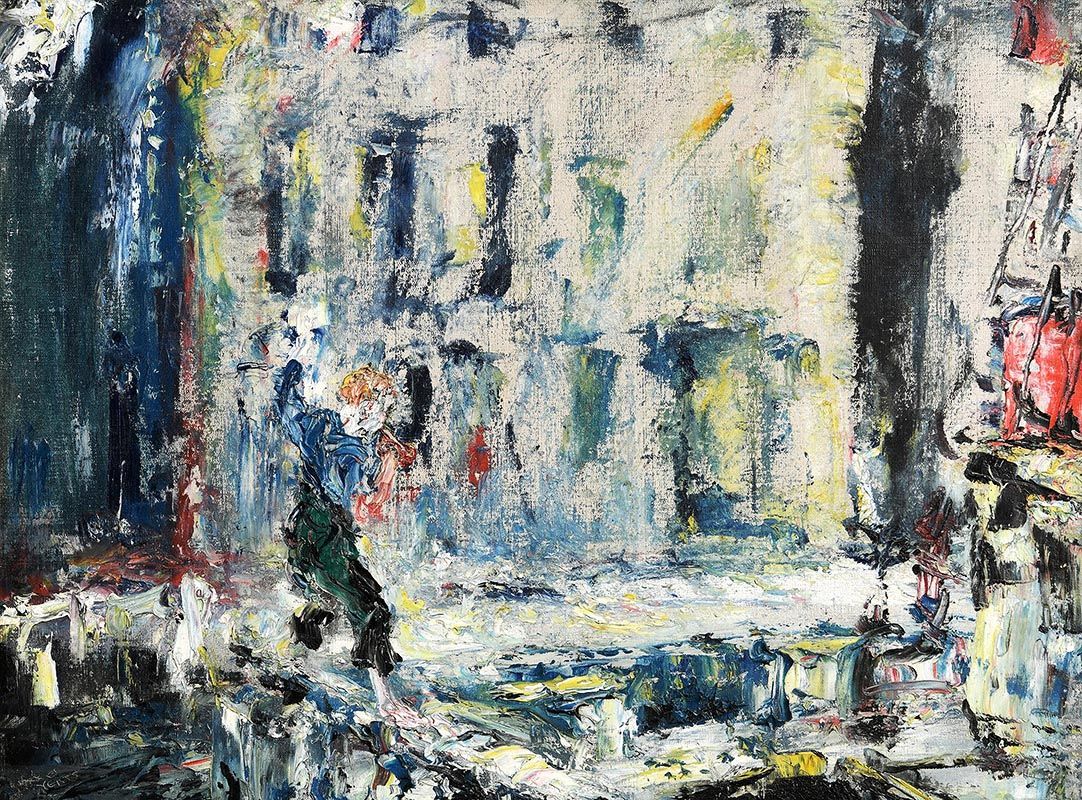
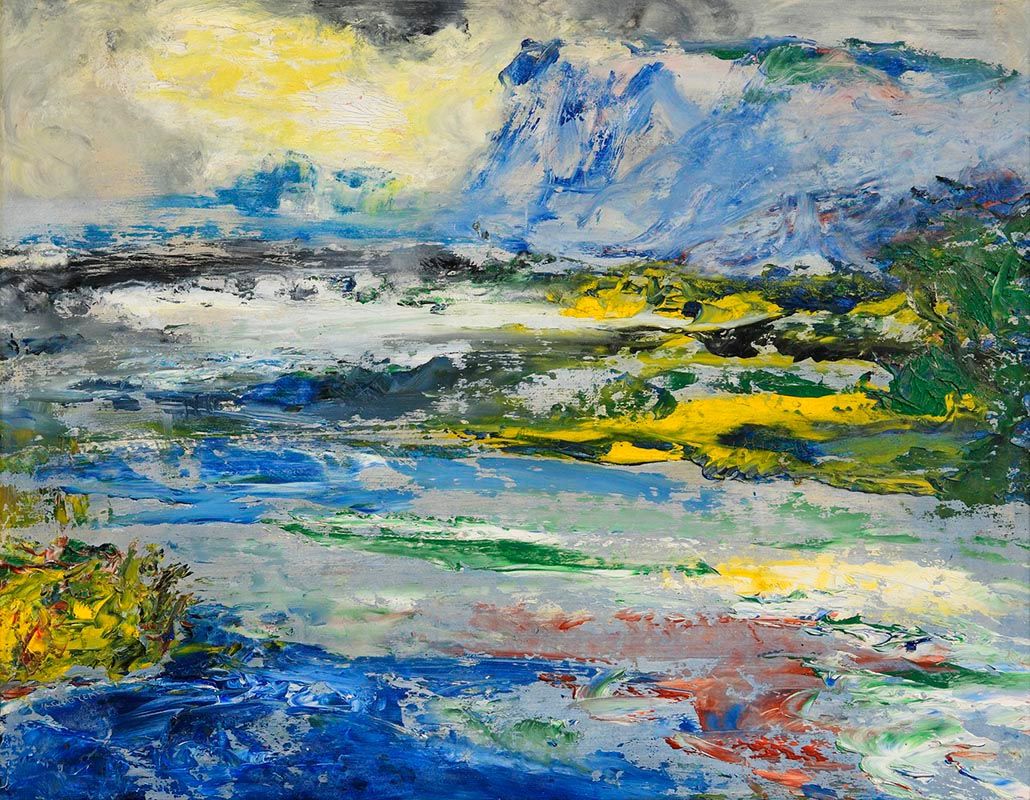
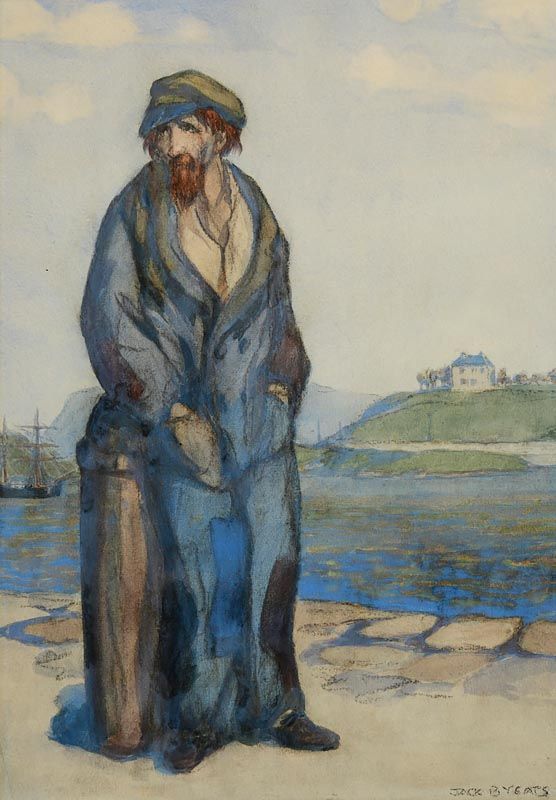

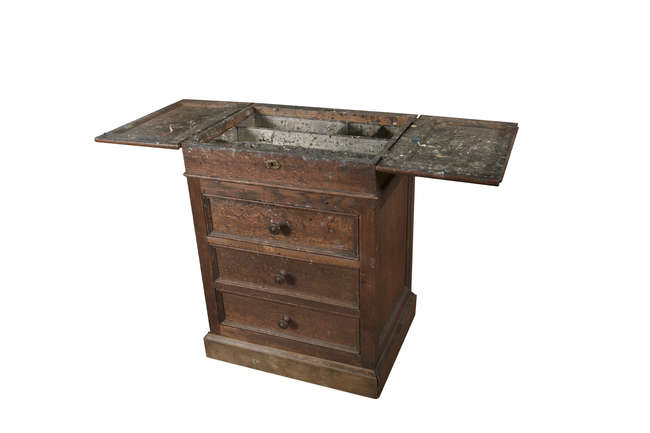
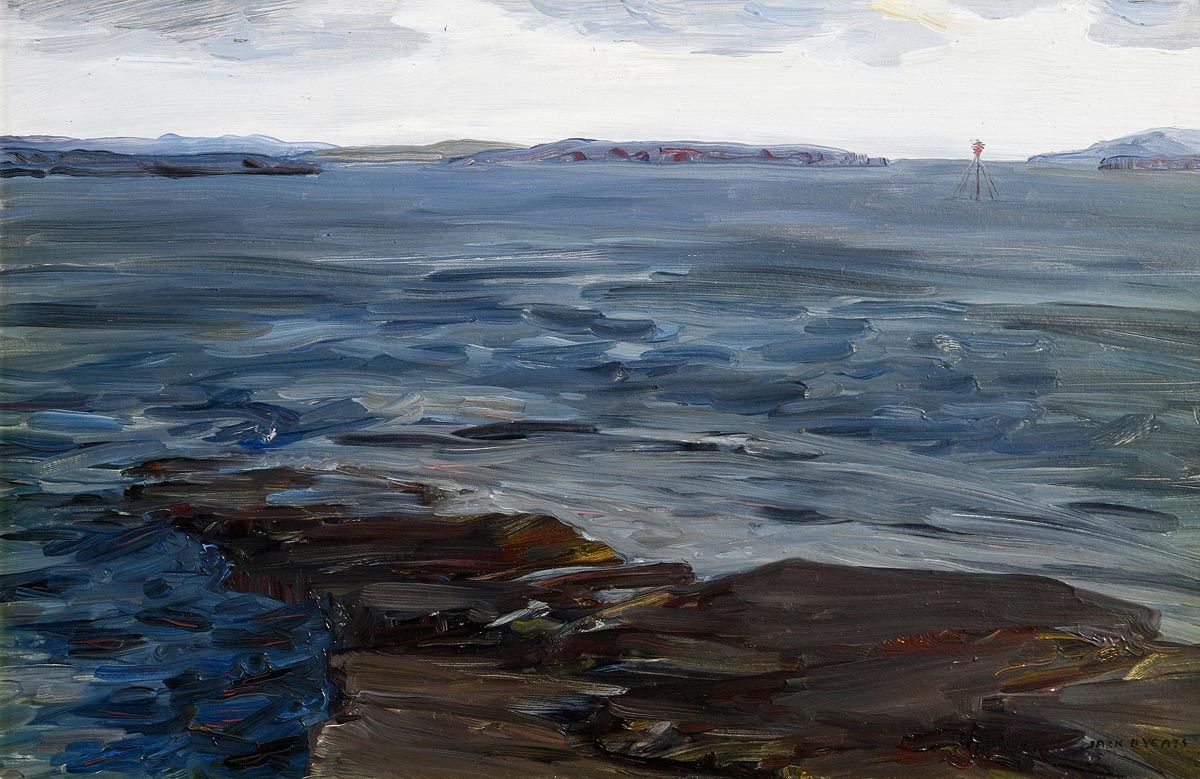
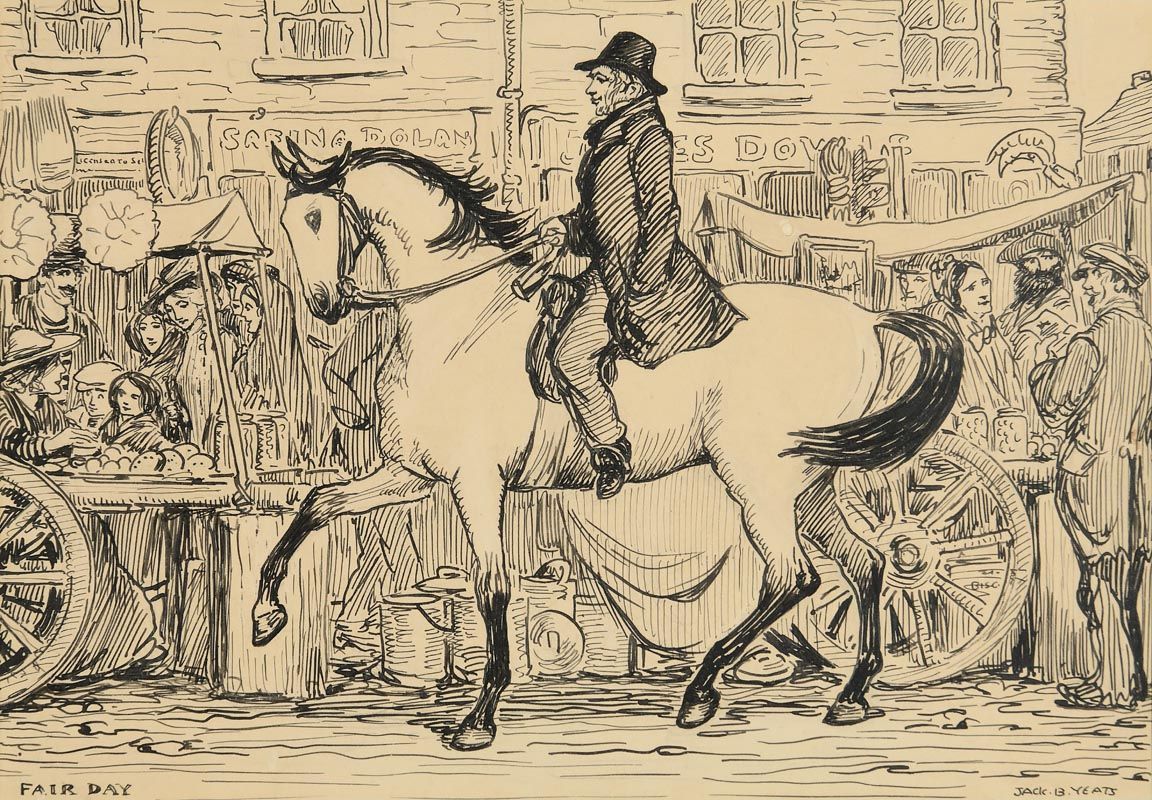
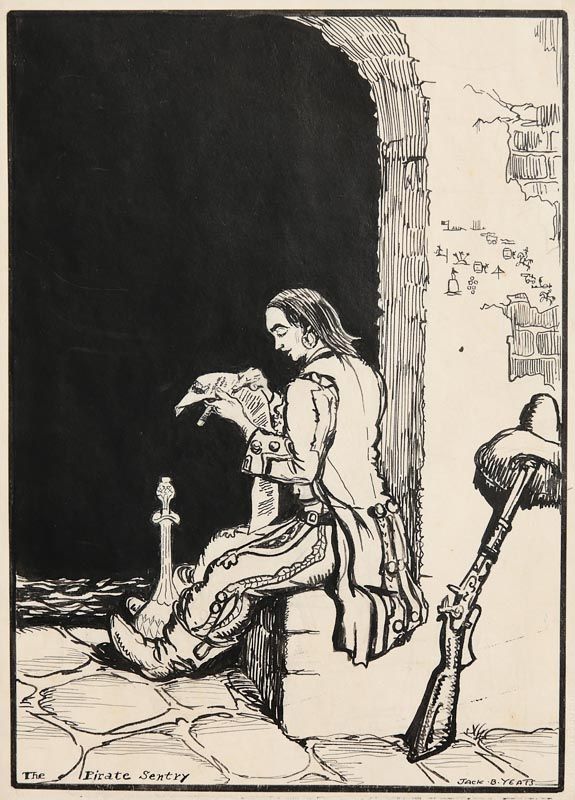


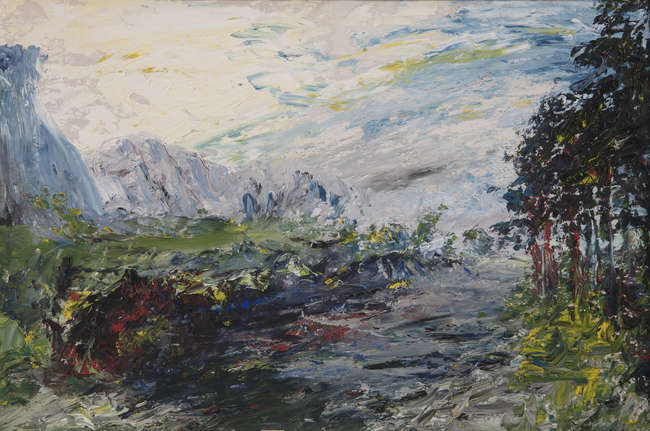
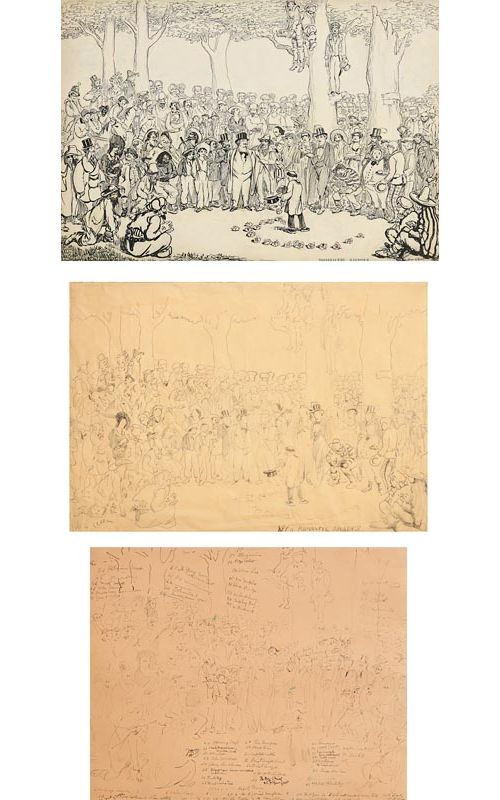
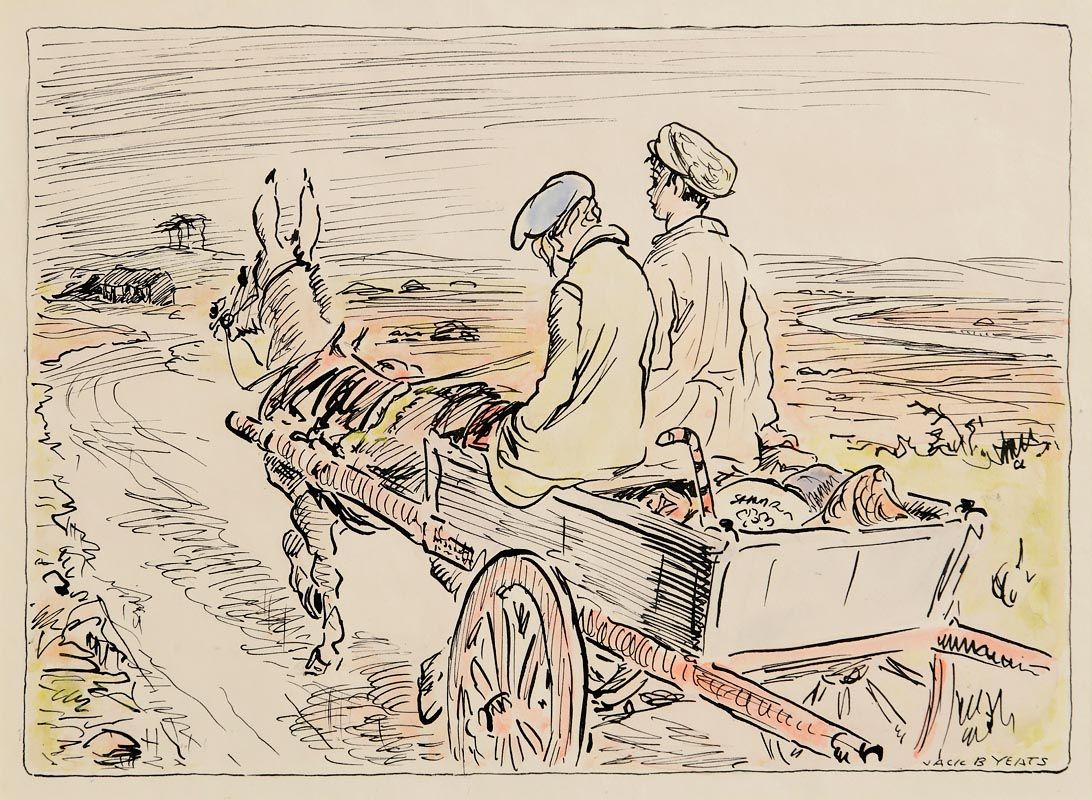

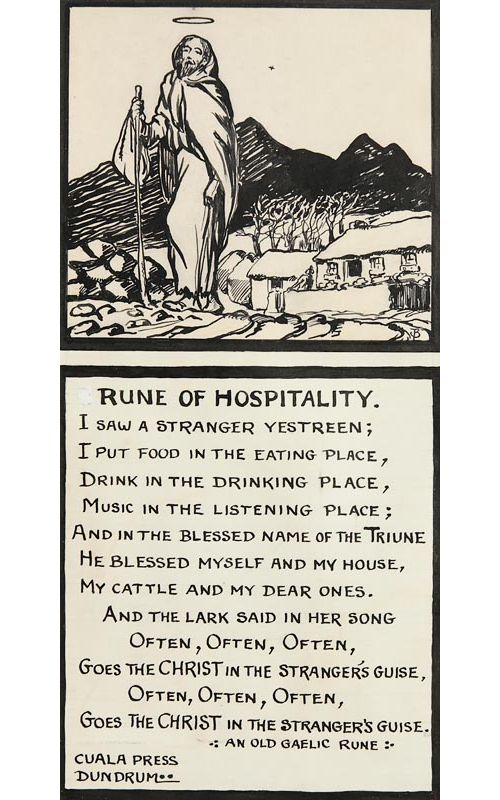
Testen Sie LotSearch und seine Premium-Features 7 Tage - ohne Kosten!
Lassen Sie sich automatisch über neue Objekte in kommenden Auktionen benachrichtigen.
Suchauftrag anlegen